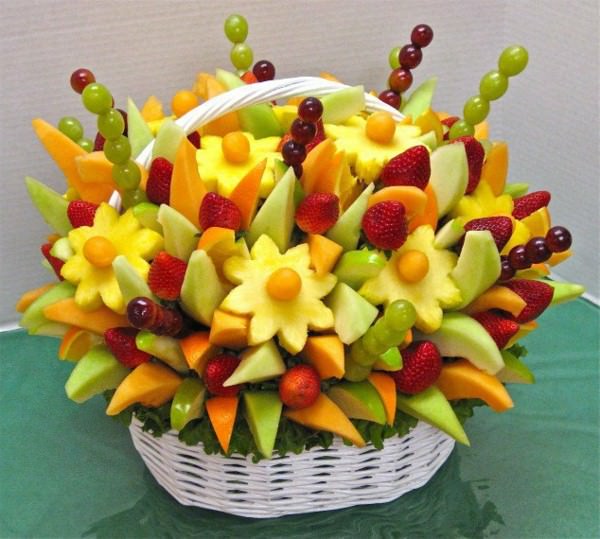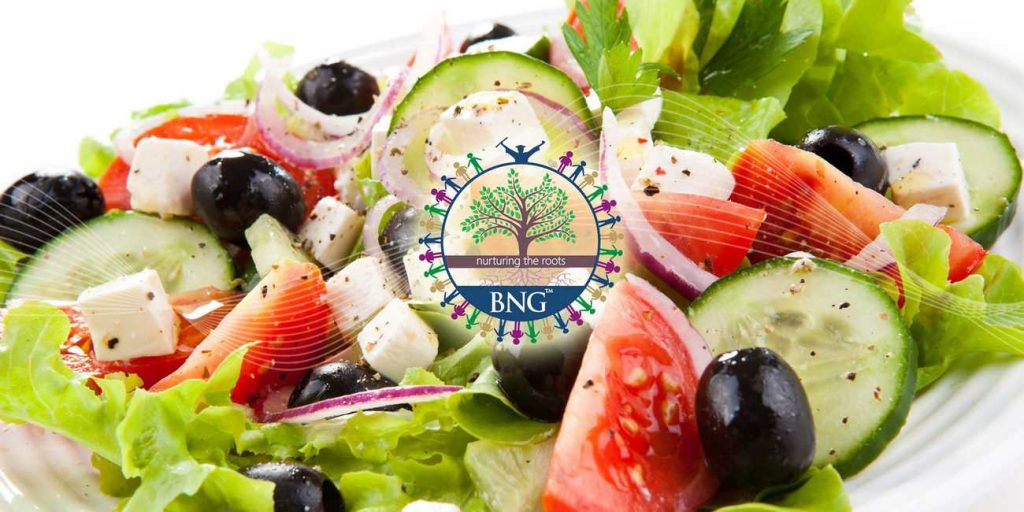SALAD -Types & Recipes
Salads : A salad is a food served a dressing, the food can be a cold dish, or green vegetables or mixture of fruit, or hot

mixture of piquant foods, or frozen mixture of blend fruit, or chopped foods in aspic, coleslaw, potato and meat.
Salad can be served as the first course in a small quantity; it can also be served as a salad course or as an accompaniment with the entrée or roast course.
Types of salad:
- Plan or simple salad.
- Compound or composite salad.
Simple salad:
These can be subdivided into green salads or salads in season, which is served raw or cooked, consisting usually of a single kind of vegetable as a base. One or two ingredients in small quantities are used for decoration or as a garnish. Examples of some of the simple salads are:
Ingredients Dressing
Celery – chopped celery vinaigrette
Cucumber – roundels of cucumber vinaigrette
Beet roots – roundels or dices of cooked beet roots – with parsley. Mustard cream
Compound salad:
They are more elaborate salads and consist of more than one ingredient. They are divided in to four groups.
- Fish based
- Vegetable based
- Poultry, game or meat based
- Fruit based
The salad has four basic parts:
Under liner or base; body; dressing and garnish. While composing salads, each part plays an important role and if one part is omitted or done poorly the finished salad will not be up to the standard.
Base: the under liner usually a leafy vegetable such as lettuce of different kinds as romaine or cos; watercress; cabbage etc. The tossed salads do not have an under liner, they are piled in bowls.
Body: this is the most important part of the salads. The salad gets its name from the ingredients that are used for the body. This part gets the most attention and its appearance is enhanced by decorations. The ingredients used have a balance of flavor and testes. The body consists of broken salads greens, tomato stuffed with tuna fish, chicken or meat dices or strips etc.
Garnish: the main purpose of the garnish is to add an eye appeal to the finished product, but in some cases it improves the taste and form.
Dressings: a dressing is usually served with all types of salads. It adds flavor, provides food value, helps digestion, and improves palatability and appearance. Dressing is in a liquid or semi-liquid form, a mixture off oil, vinegar, seasonings or eggs or cream etc.
The basic dressings are:
Mayonnaise, vinaigrette or French dressing, lemon dressing, mustard cream and acidulated cream, etc.
Mayonnaise is also known as a basic cold sauce and has numerous derivatives. It is used for cold dishes, the coating of fish, meat egg etc.
Vinaigrette can be made, in the French, English or American style. The ratios of ingredients vary.
French—3 parts of oil and one part vinegar and French mustard and seasonings.
English—1 part oil and 2 parts vinegar mustard and seasonings.
American—equal quantities of vinegar and oil seasonings and sugar.
Lemon dressing—same as vinaigrette dressing using lemon juice instead of vinegar.
Acidulated cream—3 parts thin cream and 1part of vinegar or lemon juice, salt and peeper.
Example of compound salad’s
Vegetables—tossed salad, coleslaw, Orientals
Meat—Carmen, hongroise
Fish based—fish mayonnaise
Fruit based—waldorf, eve.
Click here for 50 Simple Recipes of Salads





